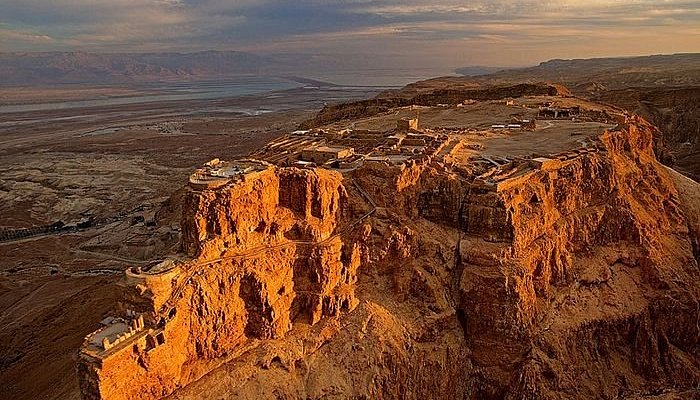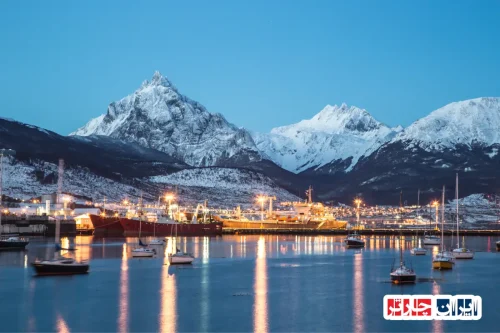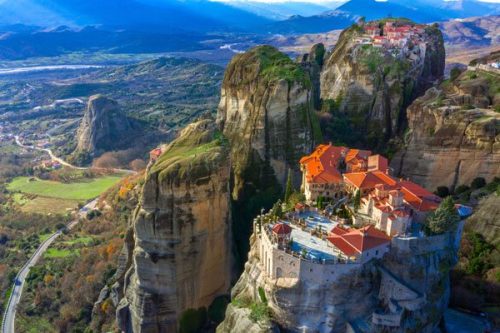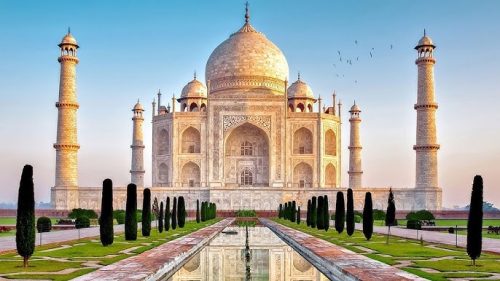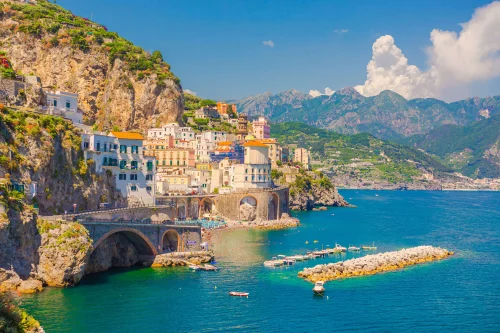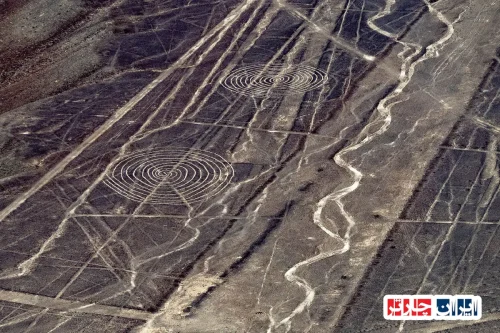Discover the Magnificent Masada Fortress in Israel: An Icon of Resilience and Heritage
Masada Fortress in Israel stands as a testament to ancient engineering, strategic ingenuity, and enduring resistance. Perched atop a rugged plateau overlooking the Dead Sea, this historic site has captivated visitors for centuries with its breathtaking views and compelling history. The fortress was originally built by King Herod the Great as a palatial retreat and fortress, showcasing advanced architectural techniques and sophisticated water management systems that allowed inhabitants to withstand sieges in harsh desert conditions. Today, Masada remains a symbol of Jewish heroism and resilience, attracting countless tourists eager to explore its well-preserved ruins and learn about its legendary past. Visiting Masada Fortress in Israel offers a unique opportunity to walk through history, marvel at ancient construction, and reflect on the enduring spirit of those who defended this remarkable site. Whether you are interested in archaeology, history, or simply seeking stunning natural scenery, Masada Fortress in Israel provides an unforgettable experience that connects the past with the present.
Discover the Rich History and Architectural Marvels of Masada Fortress in Israel
Masada Fortress in Israel stands as a symbol of resilience and ingenuity, with a history spanning over two millennia. Built atop a natural plateau in the Judean Desert, this ancient stronghold showcases remarkable engineering skills, featuring massive stone walls, watchtowers, and sophisticated defensive systems designed to withstand sieges. Its strategic location offers breathtaking panoramic views, making it a masterpiece of military architecture. The fortress’s construction reflects advanced knowledge of natural terrain utilization, with the architects employing local materials and innovative engineering techniques to ensure durability and resilience against invaders. Hidden within its walls are complex water systems, reservoirs, and secret passages that highlight the ingenuity of its builders. Studying these architectural features reveals a deep understanding of defensive strategies and sustainable living in harsh environments, emphasizing Masada’s importance in ancient military history and architecture. Today, visitors can explore these marvels, gaining insight into the ancient craftsmanship that has preserved this site for thousands of years.
The Epic Siege and Historical Significance of Masada in Ancient Times
During the Jewish-Roman wars, Masada played a pivotal role as the last bastion of Jewish resistance against the Roman Empire. Historical records depict a fierce siege where Roman forces constructed extensive ramparts, siege towers, and encircled the fortress to conquer it. Archaeological findings, including weapon remnants, scorched walls, and skeletal remains, testify to the intense battle and the heroic stand of its defenders. According to ancient texts, the defenders chose mass suicide over surrender, symbolizing their unwavering resistance and commitment to freedom. This tragic yet inspiring event has become a powerful symbol of courage and sacrifice in Israeli culture. The story of Masada’s fall encapsulates themes of resilience, patriotism, and the struggle for independence, making it a profound historical narrative that continues to inspire generations. Its significance extends beyond history, serving as a national emblem of perseverance and defiance against oppression.
Masada’s Cultural and Mythical Role in Israeli Identity
Over centuries, Masada has evolved into a cultural icon representing resistance and national pride in Israel. Its legendary story has been woven into the fabric of Israeli identity, symbolizing the collective spirit of perseverance. The tale of the heroic defenders, immortalized in literature, poetry, and art, underscores themes of sacrifice and unity. The site’s imagery appears in national ceremonies, educational curricula, and public memorials, reinforcing its role as a symbol of resilience. Artistic representations—ranging from paintings to films—depict Masada as a beacon of hope and defiance. This cultural significance influences political narratives and national policies, emphasizing the importance of safeguarding independence and sovereignty. Masada’s mythic status fosters a sense of unity among Israelis, inspiring patriotism and collective memory. Its story continues to resonate, serving as a powerful reminder of the enduring human spirit in the face of adversity.
Recent Archaeological Discoveries and Their Impact on Understanding Masada’s Past
Modern excavations at Masada have uncovered a wealth of artifacts, including ancient tools, inscriptions, and structural remnants that shed light on daily life and military strategies. Discoveries of water cisterns, storage rooms, and defensive installations reveal sophisticated engineering solutions tailored to desert conditions. The excavation of living quarters and ritual spaces offers insights into the social and religious practices of its ancient inhabitants. Notably, recent findings of written records and inscriptions provide valuable historical context, confirming and expanding upon ancient texts. These archaeological breakthroughs deepen our understanding of Masada’s strategic importance and the resilience of its defenders. They also help reconstruct the timeline of construction, occupation, and siege, offering a more comprehensive picture of its historical significance. Such discoveries continue to enhance the site’s appeal, attracting researchers and tourists eager to explore its layered history and architectural ingenuity.
Daily Life in Masada: From Defense to Community Living
Beyond its military significance, Masada was a thriving community where daily life revolved around survival, religion, and social organization. Archaeological evidence points to well-planned living spaces, including homes, communal areas, and religious sites. The inhabitants managed water resources through advanced cistern systems, ensuring a steady supply despite the arid environment. Artifacts such as pottery, utensils, and personal items depict a vibrant daily routine, with residents engaging in agriculture, crafts, and religious rituals. The presence of ritual baths and synagogues indicates the spiritual life of the community, emphasizing its cultural richness. Despite constant threats, the inhabitants maintained social cohesion and adapted to their environment with ingenuity. Understanding their daily routines offers a human perspective on the site’s history, illustrating resilience and community spirit amid adversity. Today, these insights help visitors appreciate Masada not just as a fortress, but as a living testament to human endurance.
Ingenious Water Systems and Engineering in Masada’s Desert Environment
One of Masada’s most impressive features is its complex water management system, designed to sustain its inhabitants in the harsh desert climate. Engineers of ancient times constructed elaborate cisterns, aqueducts, and channels to collect and store rainwater, ensuring a reliable water supply during sieges. These reservoirs, carved into the mountain rock, could hold large quantities of water, supporting both daily needs and emergency reserves. The system’s efficiency reflects advanced understanding of hydrology and engineering, enabling the community to survive prolonged periods of isolation. The water systems also included purification and distribution mechanisms, demonstrating ingenuity in resource management. Studying these ancient techniques provides valuable insights into sustainable architecture in arid regions. The mastery of water conservation and engineering at Masada remains a testament to human innovation and resilience in extreme environments, inspiring modern sustainable practices.
Architectural Features of Inner Structures: Palaces, Temples, and Defensive Walls
Inside Masada, a variety of structures reveal the complexity and sophistication of its architecture. The royal palace, built by Herod the Great, features luxurious halls, terraces, and water features, showcasing opulence and engineering prowess. Religious structures, including synagogues and ritual baths, highlight the spiritual life of the inhabitants. The defensive walls and watchtowers were meticulously designed to provide maximum protection and strategic advantage. The placement of these structures demonstrates a keen understanding of sightlines and attack angles, ensuring the fortress’s security. The integration of aesthetic elements with functional design reflects a high level of craftsmanship. These architectural features not only served military purposes but also embodied cultural and social values, making Masada a symbol of both strength and sophistication. Exploring these internal structures offers a glimpse into the lives of its ancient residents and their mastery of architecture in challenging environments.
The Influence of Geography and Natural Landscape on Masada’s Defense Strategy
Masada’s commanding position atop a steep plateau has been central to its defensive success throughout history. Its elevation of over 400 meters provides a natural fortress, difficult for enemies to access. The surrounding rugged terrain and cliffs act as natural barriers, reducing vulnerability to attacks. The strategic location also offers expansive views of the surrounding desert, enabling early detection of approaching enemies. The design of the fortress capitalized on these natural features, with walls and pathways aligned to maximize defense. The narrow access routes were easily guarded, and the steep slopes made any assault arduous. This synergy between natural landscape and human engineering created a virtually impregnable stronghold. Understanding how geography influenced Masada’s design underscores the importance of terrain in military architecture and strategic planning, making it a timeless example of natural defense combined with human ingenuity.
Masada in Literature, Art, and Popular Culture: Myth and Inspiration
Throughout history, Masada has inspired countless works of art, literature, and film, cementing its status as a cultural icon. Writers and poets have depicted its heroic defenders and tragic fall, emphasizing themes of sacrifice and resilience. Visual artists have captured its dramatic landscape and architectural grandeur, while filmmakers have dramatized its historic siege, bringing its story to a global audience. These representations serve to reinforce the symbolic power of Masada as a monument of resistance. Its imagery appears in national symbols, educational materials, and cultural festivals, fostering a collective sense of identity. The mythic narrative of Masada continues to motivate and inspire, symbolizing the enduring human spirit against adversity. Its portrayal in popular culture ensures that its story remains alive, resonating with new generations and reminding us of the importance of perseverance and courage in the face of challenges.
Frequently Asked Questions About Masada Fortress in Israel
- What is the historical significance of Masada?
- Masada is a symbol of resilience and heroism, representing the last stronghold of Jewish resistance against the Roman Empire during the Jewish-Roman wars. Its dramatic siege and the heroic stand of its defenders have made it a powerful emblem of courage and sacrifice in history.
- How was Masada constructed on the mountain?
- Built atop a natural plateau in the Judean Desert, Masada showcases advanced engineering skills. Its massive stone walls, watchtowers, and sophisticated defensive systems were designed to withstand sieges, utilizing local materials and innovative techniques to ensure durability in harsh environments.
- What are the main architectural features of Masada?
- Masada features a royal palace built by Herod the Great, religious structures like synagogues, and extensive defensive walls with watchtowers. Inside, there are luxurious halls, terraces, water systems, and secret passages, reflecting high craftsmanship and strategic planning.
- How did the geography influence Masada’s defense?
- Its location atop a steep plateau over 400 meters high, surrounded by rugged cliffs and natural barriers, made it nearly impregnable. The natural terrain provided strategic advantages, such as early detection of enemies and difficult access routes, enhancing its defensive strength.
- What role did water management play in Masada’s survival?
- Masada’s complex water systems, including cisterns and aqueducts, allowed it to store rainwater and sustain its inhabitants during sieges. These engineering solutions demonstrated advanced hydrological knowledge, ensuring a reliable water supply in the desert climate.
- What recent archaeological discoveries have been made at Masada?
- Recent excavations have uncovered artifacts like tools, inscriptions, water cisterns, and remnants of structures, providing deeper insights into daily life, military strategies, and the construction timeline of Masada. These findings continue to enhance our understanding of its history.
- What was daily life like for the inhabitants of Masada?
- The residents managed water resources, engaged in agriculture, crafts, and religious practices. Archaeological evidence shows homes, communal areas, ritual baths, and religious sites, illustrating a vibrant community that thrived despite constant threats.
- How did Masada’s natural landscape contribute to its defense?
- The steep cliffs and elevated position made it difficult for enemies to attack. Its strategic location provided panoramic views and natural barriers, which, combined with human engineering, created a nearly impregnable fortress.
- What is the cultural significance of Masada in Israeli identity?
- Masada has become a national symbol of resistance, patriotism, and perseverance. Its story of heroism and sacrifice is woven into Israeli culture through literature, art, and national ceremonies, inspiring pride and unity.
- How is Masada represented in art and popular culture?
- It has been depicted in paintings, films, and literature as a symbol of resilience. Its dramatic landscape and historical events continue to inspire artists and storytellers worldwide, reinforcing its iconic status.
- What are the main challenges in preserving Masada?
- Preservation efforts focus on protecting the site from erosion, environmental damage, and tourism impact. Continuous archaeological work and sustainable tourism practices are essential to maintain Masada’s integrity for future generations.
- Can visitors explore Masada today?
- Yes, visitors can explore the archaeological site, including the ancient ruins, water systems, and fortifications. Guided tours and informational displays help visitors understand its historical and architectural significance.
- What lessons can modern engineers learn from Masada?
- Masada’s advanced water management, strategic design, and use of natural terrain offer valuable insights into sustainable architecture and defensive engineering in challenging environments.
- Why is Masada considered a UNESCO World Heritage Site?
- Its outstanding universal value lies in its historical significance, architectural ingenuity, and cultural symbolism, representing a remarkable achievement of human resilience and engineering in a desert environment.
- How does Masada inspire contemporary resilience and resistance?
- The story of its defenders’ unwavering resistance against overwhelming odds continues to inspire movements for freedom, independence, and perseverance worldwide, making Masada a timeless symbol of human endurance.
